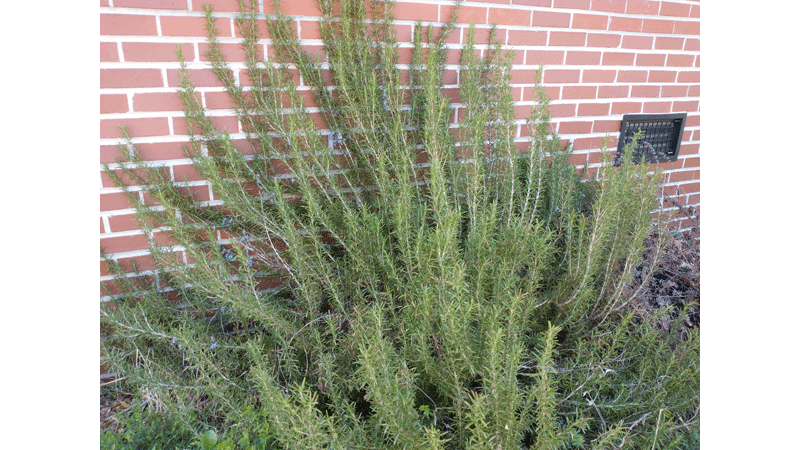Herb gardens of various styles
Published 5:58 pm Wednesday, March 30, 2022

- Herbal teas can be a good supplement to reduce stress and relax. (Photo submitted by Mark C. Carroll)
|
Getting your Trinity Audio player ready...
|
By Mark C. Carroll
Master Naturalist
I love rosemary, as you can plainly see. This specimen overwintered and is currently blooming small blue flowers. Aside from the basic utility of cooking with it, you just gotta love the smell. There are so many Herbs worth our gardening effort but today I thought I would share some ways to use them in creatively themed gardens. For example, I did not know prior to writing this article that “knot gardens” existed. After seeing a picture, I suspect I may have seen one once or twice before, but it never donned on me that there was a term for geometrically patterned plants that appear to be woven into and across each other to form a design. I found them in a copy of “Rodale’s Illustrated Encyclopedia of Herbs” I purchased in a local thrift shop and was intrigued. What other garden types or themes could home gardeners do with herbs?
How about a medicinal garden? Herbal teas get a lot of attention and some of the best herbs for tea like lemon grass, lemon balm, and the mints grow with very little effort. These can be a good supplement to reduce stress and relax a person. Please do not throw out your medications and treat yourself with herbal remedies. If you are using herbs for medicinal purposes, please at least let your doctor know and take advantage of their experience and knowledge.
A dye garden is another interesting idea. Since very few of us dye our own clothes, I suspect these are much less popular than they once were. It seems likely the plants in a dye garden would be vibrant colors of red, yellow and blue.
There are so many plants which can be used to form a “fragrance garden” from nasturtiums, bee balm, lavender, mints, geraniums, thyme, lemon balm, and of course rosemary. In fact, you could approach such an endeavor by seeking plants that have multiple uses and purposes. Would that be a multi-tasking garden?
An everlasting garden is one composed of perennials, so you do not always have to replant and one that contains plants that can be dried and used in arrangements. Cutting flowers before they fully open can allow them to continuing maturing as they dry.
A “kitchen garden” is perhaps one of the more popular themes. Basils, parsley, mints and thyme are always favorite of kitchen cooks who love the very freshest ingredients.
My intent today was not to describe in great detail each type but just to get you thinking about these themes and how to incorporate plants in a collective way. If you are interested in designing one of these types of gardens, do some more research and get the plants that will suit the need or theme you chose.





